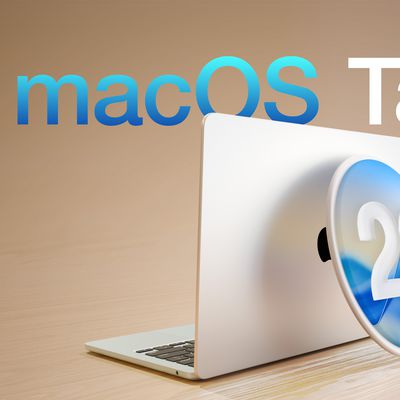EPEAT Defends Verification of Ultrathin Notebooks for Environmental Registry
 Earlier this week, we noted that Apple's Retina MacBook Pro and newest MacBook Air models had been among a number of ultrathin notebooks whose eligibility for inclusion on the Electronic Product Environmental Assessment Tool (EPEAT) registry had been verified. The approval came with some clarifications of the EPEAT standards that were criticized by some, including iFixit's Kyle Wiens, as watering down the requirements for inclusion.
Earlier this week, we noted that Apple's Retina MacBook Pro and newest MacBook Air models had been among a number of ultrathin notebooks whose eligibility for inclusion on the Electronic Product Environmental Assessment Tool (EPEAT) registry had been verified. The approval came with some clarifications of the EPEAT standards that were criticized by some, including iFixit's Kyle Wiens, as watering down the requirements for inclusion.
EPEAT has now posted a defense of its actions, noting that its review committee was simply following the guidelines as they are written. The group acknowledges some of the concerns, but notes that those issues should be raised in the forthcoming update to the standards and not as criticism of the application of the standards as they are currently written.
Regarding upgrade capability, the criteria specifically state that products may be upgraded or extended “by a high performance serial bus (IEEE Std 1394™ [B4]) or Universal Serial Bus (USB)”. Regardless of opinions about whether or not that is appropriate or acceptable language, the hard fact is that EPEAT has no authority to ‘flunk’ products if they meet the explicit terms of the standard.
Regarding disassembly: The criteria under discussion are located in the section of the standard that addresses Design for End of Life – that is, design for effective recycling. The criteria investigated are not in any way aimed at refurbishment or repair. Again, people may think that there should be more in the standard about disassembly for repair and refurbishment – and we welcome their views – but these criteria do not apply to that topic.
The group goes on to note that EPEAT standards are developed through an open process that involves stakeholders from a number of sides, although Wiens had previously noted that the voting group for the last standards update was heavily weighted toward computer industry companies. EPEAT also notes that at the time of the registry's implementation, no products qualified for the Gold standard, indicating that the registry's overall purpose in defining reachable goals has been a success.
The EPEAT system was structured to encourage continual improvement by providing progressive ratings and by regularly updating the environmental performance criteria products must meet. It took a year for any products to meet the Gold rating requirements after the registry launched, because it was extremely challenging to do so. Over time, the EPEAT PC/Display criteria have become more familiar and companies have designed them into their products and supply chain requirements. That’s a good thing. In fact the whole point of the EPEAT system is to drive change… Our goal is to create a new bottom line for environmental innovation that affects the whole global industry for the better.
EPEAT is moving forward with its next update to its PC/Display standards, hoping draw upon recently-updated standards for imaging equipment and televisions in certain aspects. Consequently, it seems that the time for those interested in tightening the criteria for such aspects as upgradeability and recyclability and to add criteria for repairability is approaching.
Popular Stories
Apple seeded the second iOS 26.2 Release Candidate to developers earlier this week, meaning the update will be released to the general public very soon.
Apple confirmed iOS 26.2 would be released in December, but it did not provide a specific date. We expect the update to be released by early next week.
iOS 26.2 includes a handful of new features and changes on the iPhone, such as a new...
Macworld's Filipe Espósito today revealed a handful of features that Apple is allegedly planning for iOS 26.4, iOS 27, and even iOS 28.
The report said the features are referenced within the code for a leaked internal build of iOS 26 that is not meant to be seen by the public. However, it appears that Espósito and/or his sources managed to gain access to it, providing us with a sneak peek...
Apple today released new firmware designed for the AirPods Pro 3 and the prior-generation AirPods Pro 2. The AirPods Pro 3 firmware is 8B30, up from 8B25, while the AirPods Pro 2 firmware is 8B28, up from 8B21.
There's no word on what's include in the updated firmware, but the AirPods Pro 2 and AirPods Pro 3 are getting expanded support for Live Translation in the European Union in iOS...
Apple today released iOS 26.2, the second major update to the iOS 26 operating system that came out in September, iOS 26.2 comes a little over a month after iOS 26.1 launched. iOS 26.2 is compatible with the iPhone 11 series and later, as well as the second-generation iPhone SE.
The new software can be downloaded on eligible iPhones over-the-air by going to Settings >...
Google Maps on iOS quietly gained a new feature recently that automatically recognizes where you've parked your vehicle and saves the location for you.
Announced on LinkedIn by Rio Akasaka, Google Maps' senior product manager, the new feature auto-detects your parked location even if you don't use the parking pin function, saves it for up to 48 hours, and then automatically removes it once...
The AirTag 2 will include a handful of new features that will improve tracking capabilities, according to a new report from Macworld. The site says that it was able to access an internal build of iOS 26, which includes references to multiple unreleased products.
Here's what's supposedly coming:
An improved pairing process, though no details were provided. AirTag pairing is already...
Apple today released macOS Tahoe 26.2, the second major update to the macOS Tahoe operating system that came out in September. macOS Tahoe 26.2 comes five weeks after Apple released macOS Tahoe 26.1.
Mac users can download the macOS Tahoe update by using the Software Update section of System Settings.
macOS Tahoe 26.2 includes Edge Light, a feature that illuminates your face with soft...
Apple is about to release iOS 26.2, the second major point update for iPhones since iOS 26 was rolled out in September, and there are at least 15 notable changes and improvements worth checking out. We've rounded them up below.
Apple is expected to roll out iOS 26.2 to compatible devices sometime between December 8 and December 16. When the update drops, you can check Apple's servers for the ...
 Earlier this week, we noted that Apple's Retina MacBook Pro and newest MacBook Air models had been among a number of ultrathin notebooks whose eligibility for inclusion on the Electronic Product Environmental Assessment Tool (EPEAT) registry had been verified. The approval came with some clarifications of the EPEAT standards that were criticized by some, including iFixit's Kyle Wiens, as watering down the requirements for inclusion.
Earlier this week, we noted that Apple's Retina MacBook Pro and newest MacBook Air models had been among a number of ultrathin notebooks whose eligibility for inclusion on the Electronic Product Environmental Assessment Tool (EPEAT) registry had been verified. The approval came with some clarifications of the EPEAT standards that were criticized by some, including iFixit's Kyle Wiens, as watering down the requirements for inclusion.






















